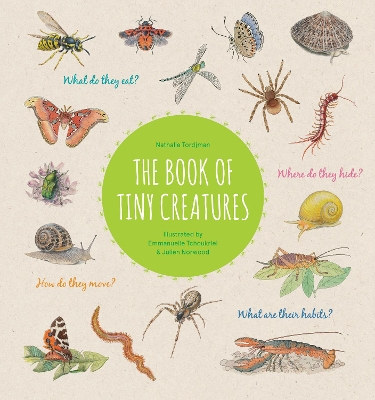
annieb123
Written on Jan 24, 2021
The Book of Tiny Creatures is a science based book on invertebrates for all ages. Originally published in French in 2018, this English language edition is due out 16th Feb 2021 from Princeton Architectural Press. It's 72 pages and will be available in hardcover and ebook formats.
I've always loved inverts. Even as a kid, I was fascinated and would sit and watch ants or snails go about their business for hours. I had freshwater and reef tanks as an adult and they were full of snails and other inverts. Nine-year-old me would have *loved* this book.
The book moves from a general introduction of what invertebrates are, their biology and anatomy, how they reproduce, how they grow, and where they live. The language is simple and accessible, but scientifically accurate. The following chapters cover different environments - flying creatures, crawling creatures, and ones which live (at least part of the time) in the water.
There are short multiple-choice quizzes scattered throughout to challenge readers' comprehension and retention as well as small question and answer sidebars. Answers are provided in answer keys in the back of the book. The illustrations are beautifully expressive and full of small eye-catching details. The eARC I received for review doesn't contain specific information about the art or artist's process, but it appears to be a mixture of different media - pen & ink, colored pencil, watercolor. The illustrations are beautiful and easily recognizable down to tiny realistic details of anatomy and environment. The species represented in the book are not labeled with their proper taxonomic names, so facilitators/teachers/parents may have to make some more effort to help young readers with precise names if they're drawing or filling out observation journals. The book also has a slight European emphasis on the animals which are included (European hedgehogs, admiral butterflies, and the European garden snail are included in some form in the text, not so much opossums, skunks, and North American indigenous inverts). There is a major overlap of course, and North American readers will find plenty of species which are ubiquitous and are included.
Five stars. This would make a wonderful choice for school or public library, activity group, scouting or science activity, home library, or gifting.
Disclosure: I received an ARC at no cost from the author/publisher for review purposes.
